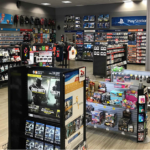At the Total Retail Tech conference earlier this month in Denver, generative artificial intelligence was a theme of ongoing conversation. From keynote presentations and panel discussions on stage to peer group sessions and one-to-one meetings off stage, attendees were buzzing about generative AI and its current and future impact on their work and the organizations they lead.
One such conversation took place during a panel session involving technology and marketing leaders from Sephora, Kendra Scott, Solo Brands, and Adorama. Titled “How Generative AI is Shaping the Future of Retail,” the session featured the expert insights of Sree Sreedhararaj, senior vice president, chief technology officer, Sephora; Jim Forester, chief information officer, Kendra Scott; Jenna Posner, chief digital officer, Solo Brands; and Hani Batla, chief information and technology officer, Adorama. The session was moderated by Brendan Witcher, vice president, principal analyst, Forrester.
Here are some of the key points to emerge from the session.
Is the Hype Around Generative AI Warranted?
“It [generative AI] is at the peak of the hype cycle,” Sreedhararaj noted. “Gen AI and AI have been around for a long time; they were just not visible to many consumers. Where Gen AI has truly performed well from an adoption standpoint is that people started consuming it at every age, level and skillset. That has helped with awareness.”
Posner cited the ubiquitous nature of generative AI as the primary reason it has generated so much excitement within retail organizations.
“As retailers, we’ve done a really good job looking at generative AI and trying to find ways to utilize it to enhance or create efficiencies in our lives,” said Posner, citing examples such as copywriting, asset creation.
At jewelry brand Kendra Scott, initially the thought was that generative AI wasn’t worth the hype, according to Forester. That viewpoint is evolving, however, in large part because of the accessibility of the technology.
“I explained to my peers that this is something that broadly impacts all of them in some fashion,” Forrester said in regards to generative AI. “This isn’t just a niche thing. I think it is worth the hype.”
Batla talked about how generative differs from other hyped emerging technologies that have fizzled, including metaverse and drone delivery.
“The cycle between hype and reality is shorter than anything we’ve seen,” Batla noted. “Already there are so many real-world applications that we’re seeing. Everybody from kids in college to professionals are already using it [generative AI] in some capacity. The way it’s propagating across our society and all these different industries is game changing.”
A Generative AI Use Case
Before joining Solo Brands, Posner was the chief digital officer of the global sneaker and streetwear brand Snipes. While in that role, the company decided to launch a drop-ship program for order fulfillment. As Posner noted, when you enable drop-ship suppliers, they come with lots and lots of styles and SKUs. However, the idea of utilizing the suppliers’ content on Snipes’ website led to concerns that it would devalue the brand’s existing site content from an SEO perspective. Therefore, rewriting that product content became essential for Snipes.
Snipes was faced with a decision: have a human take the 10,000-plus SKUs and styles and chip away at rewriting the product content over the course of a month or use generative AI to rewrite that content. Snipes chose the latter. And the results were startling.
“We did about two weeks worth of work in about two hours,” Posner recalled.
While not perfect — Posner noted that there was a quality assurance component to the project, noting that the generative AI can hallucinate leading to irrelevant and/or inaccurate information — the technology proved to be an invaluable tool for Snipes in quickly and efficiently publishing the product content necessary to stand up its drop-ship program.
Furthermore, in Posner’s current role at Solo Brands, the company has used generative AI within its live chat functionality to help service its customers while also leading them to the company’s desired outcome: a conversion. This approach has resulted in a 42 percent attach rate — i.e., 42 percent of the tickets that were created through live chat were actually solved by the bot. Solo Brands also earned a 4.7 out of five customer satisfaction score. Lastly, the bot helped Solo Brands decrease its workload by 32 percent.
“What that 32 percent decrease in workload means is that we actually freed up humans to do human things, such as take escalations or situations where consumers really do need that human touch,” noted Posner. “It allowed us to be more effective holistically and better serve our consumers.”
Tips to Get Started Using Generative AI
Witcher wrapped up the session by asking the panelists the one thing they would advise the audience to do in order to start using generative AI today. Here were the responses:
- Sreedhararaj: Start playing around with ChatGPT, which is publicly available. If you have something available internally, start using it. Try different things. Nobody is going to teach you how to prompt engineer yourself, but play around with the different options available to you.
- Posner: Test, measure and become a champion.
- Forester: Educate yourself and find your strategy.
- Batla: If you haven’t already started playing with it, play with it. It’s nowhere near perfect, it’s nowhere near final. It’s going to change so much more in the next few weeks, months, years. But more importantly, educate yourself and bring other people in your organization along for the journey.


















